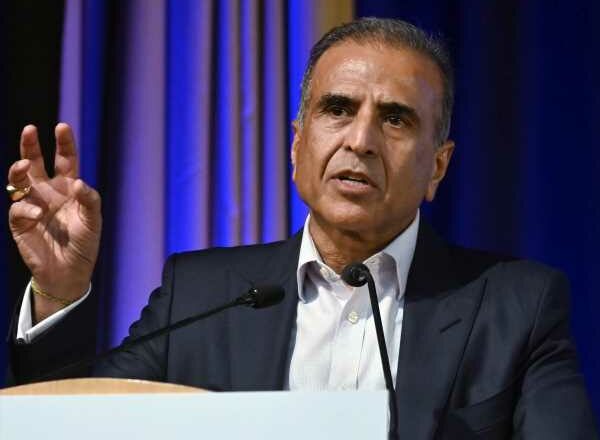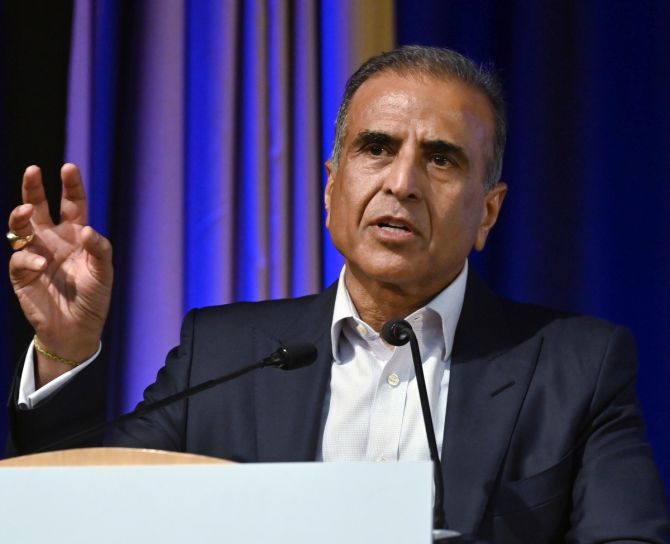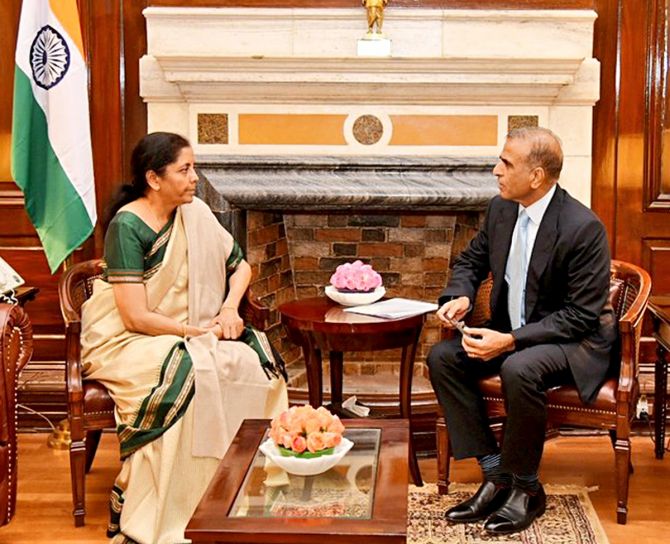‘We are not saying everybody has to pay that much’
‘If you are going to have only a handful of telecom players on whom the entire dream of Digital India rests, it’s important they are financially sustainable.’
Bharti Enterprises founder and chairman Sunil Mittal believes corporate India is in a mood to invest and there’s momentum in the industry.
In an interview at his New Delhi office, Mittal spoke to Nivedita Mookerji and Subhayan Chakraborty/Business Standard on a wide range of subjects including the economy, regulatory space, 5G, Chinese vendors, spectrum auction for satellite services, tariffs, competition, the upcoming G20 summit and the B20 Africa Council that he’s chairing.
The first of a two-part interview.
How is corporate India looking at the latest GDP numbers?
They are very good and that’s not a surprise. You can see the momentum.
Isn’t the Q4 number a surprise going by the commentary so far?
I would say the mood of the nation was looking better than what was being suggested.
This only confirms the momentum in foreign investment, local capital in industry, new plants, new capacity.
The numbers validate that. True that some sections of the society and industry are suffering whereas others are flourishing. But the overall GDP for the full year at 7 per cent plus implies it (the momentum) is fairly widespread.
The consumption is still not very robust, it seems…
There’s some stress in certain areas where you are seeing consumption is slightly lower, but this number suggests that by and large things are okay. I hope we can maintain it.
With these GDP numbers, do you see animal spirits of India Inc coming out now?
I think animal spirits are already out.
If you have been speaking to businessmen recently, everyone has been wanting to invest more in this country.
Foreign companies are coming in a bigger way.
Look at us, how our industry is investing. We, as a company, are investing around Rs 25,000 crore to Rs 30,000 crore (Rs 250 billion to Rs 300 billion) year on year…
What is your capex outlook for FY24?
Capex for FY24 is already being touted at Rs 28,000 crore to Rs 31,000 crore (Rs 280 billion to Rs 310 billion) in the India business.
This is all directed towards 5G. Next year will see the rollout continuing, in the same order of magnitude.
The capex will be maybe a few thousand crores less. It will taper off thereafter.
What are the takeaways from the ongoing 5G rollout?
Such a level of rollout has never been tried anywhere in the world for any technology. But right now the availability of 5G devices is limited.
Traffic shifting from 4G to 5G is currently at 5 to 6 per cent.
This will accelerate as we have seen in the past. My view is 25 per cent of the traffic will move to 5G by the end of this financial year.
Smartphone deliveries have been mixed. Some states are seeing higher deliveries, while in others, it has slowed down because of high import duties.
We will be ready with the network in all towns and cities by March 2024, and move into rural areas after that.
On satellite spectrum, what’s your sense. Will it be auctioned?
We simply don’t know how it can be auctioned.
On satellite spectrum, our view is simple — it can’t be auctioned because it is a shared spectrum.
I have not heard anybody say how it will be implemented in case it is auctioned. I haven’t heard one solution.
We are building two plots of 15 acres for our ground stations, How do you auction a plot so small? There has been no successful global precedent simply because no one has even tried it.
It is a shared resource unlike the terrestrial spectrum.
When do you think the issue will be resolved?
We will be ready by Diwali to provide OneWeb services.
The space policy has been ushered in.
The FDI policy in the space sector is being discussed, and is expected to come in the next 90 days.
Some people confuse the auctions for slots of orbits.
That has nothing to do with spectrum; it is covered by the International Telecommunications Union.
We are already in service in Canada, the US, Greenland and Northern Europe… The service is required for connecting the unconnected, connecting the armed forces in the Himalayas and deep rural areas.
It’s not for Delhi and Mumbai. You cannot deny this wonderful opportunity in your arsenal to deliver connectivity to everyone in India because somebody is trying to block it.
The government has to see through this. In the end it is a very small business.
OneWeb’s total capacity that will land in India will not generate more than $10 million-$15 million a year. If they auction it, we will stay out. What else can we do?
What are your thoughts on the backhaul issue?
If you want to put out 5G fast, we need access to V and E bands.
Rolling out fibre cables will take time. The government was very smart to understand the wickedness of this opposition to E and V bands.
That’s why they immediately granted it on a provisional basis. Otherwise, we wouldn’t have been able to launch 5G.
Is the fear of duopoly now almost a reality in India?
Rather than duopoly, I would say, it’s about two private players.
We heard the minister saying that BSNL will be strengthened.
So if not a four-player market, certainly India will be a three player market.
BSNL has placed orders for 100,000 new base stations. The government is determined to have at least three players.
Are fears about two private players legitimate?
What do you do? Operating in this industry requires serious investments.
Within a matter of 24 months, Airtel has spent Rs 40,000 crore (Rs 400 billion) on 5G spectrum.
It has made a capital expenditure of Rs 60,000 crore (Rs 600 billion) in these two years.
So, we have spent Rs 1 trillion on establishing a new layer of technology. That is the level of investment you need.
This is over and above the massive investments that have gone into 4G and 3G.
Can Vodafone Idea raise that kind of capital? I really have no visibility on that, I hope they can.
So, when do you see tariffs going up in India?
We already have a little premium. It would be hard for us to push the envelope any further on the idea that that this industry requires better financial health.
It’s accepted by everyone including the government.
Look at the fragility of the situation. If you are going to have only a handful of telecom players on whom the entire dream of Digital India rests, it’s important they are financially sustainable.
To that extent, I have maintained for a long number of years, we need an ARPU (average revenue per user per month) of Rs 300.
Now, it is nearing Rs 200 which is the first pit stop. It’s taken us much longer to reach this level, than I imagined.
So, it’s painful. We have been taking the lead.
We have moved all our plans above Rs 150. We now have nothing below that level.
We took that roll call at a time when no one was willing to.
Two years back, you said the market leader, referring to Reliance Jio, would have to take the first step. Do you maintain that stand?
We consider ourselves to be leaders in this industry. But you can’t have an outlier position on tariffs.
You have to be in line with the market. We have done whatever we could do, and wherever, without hurting our market share, and burdening our customers.
We are also conscious that a large section of society has affordability issues.
When we say ARPU needs to go up to Rs 300, we are not saying everybody has to pay that much. But this whole phenomenon of providing unlimited services, no matter what you pay, is destroying the industry. You must pay more for more.
Feature Presentation: Rajesh Alva/Rediff.com
Source: Read Full Article



